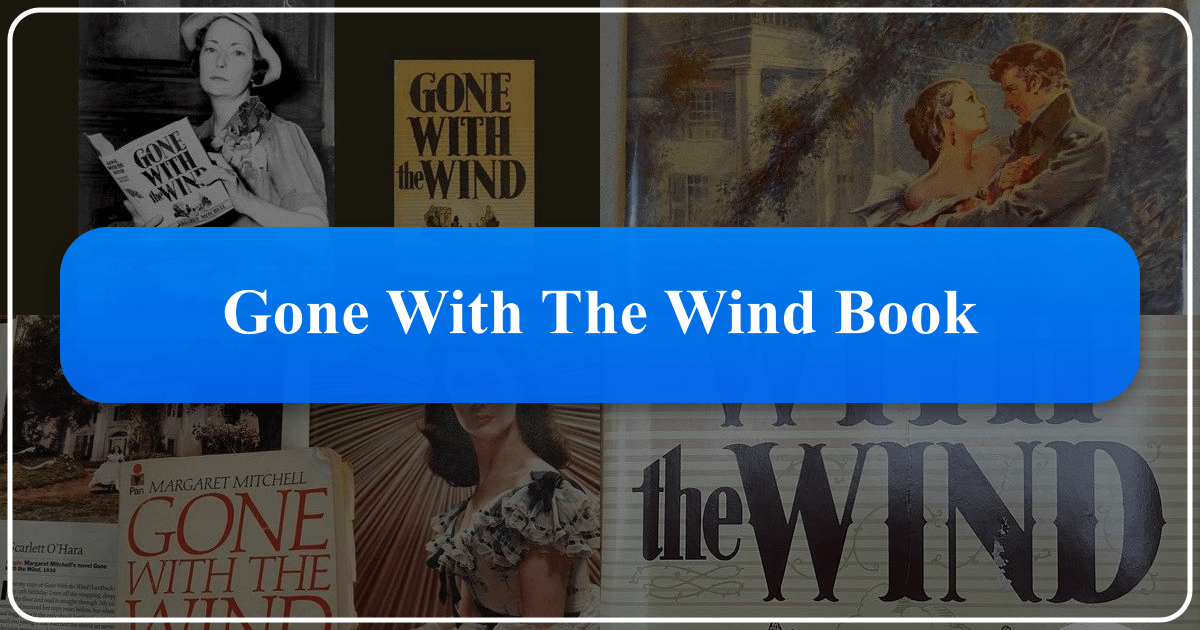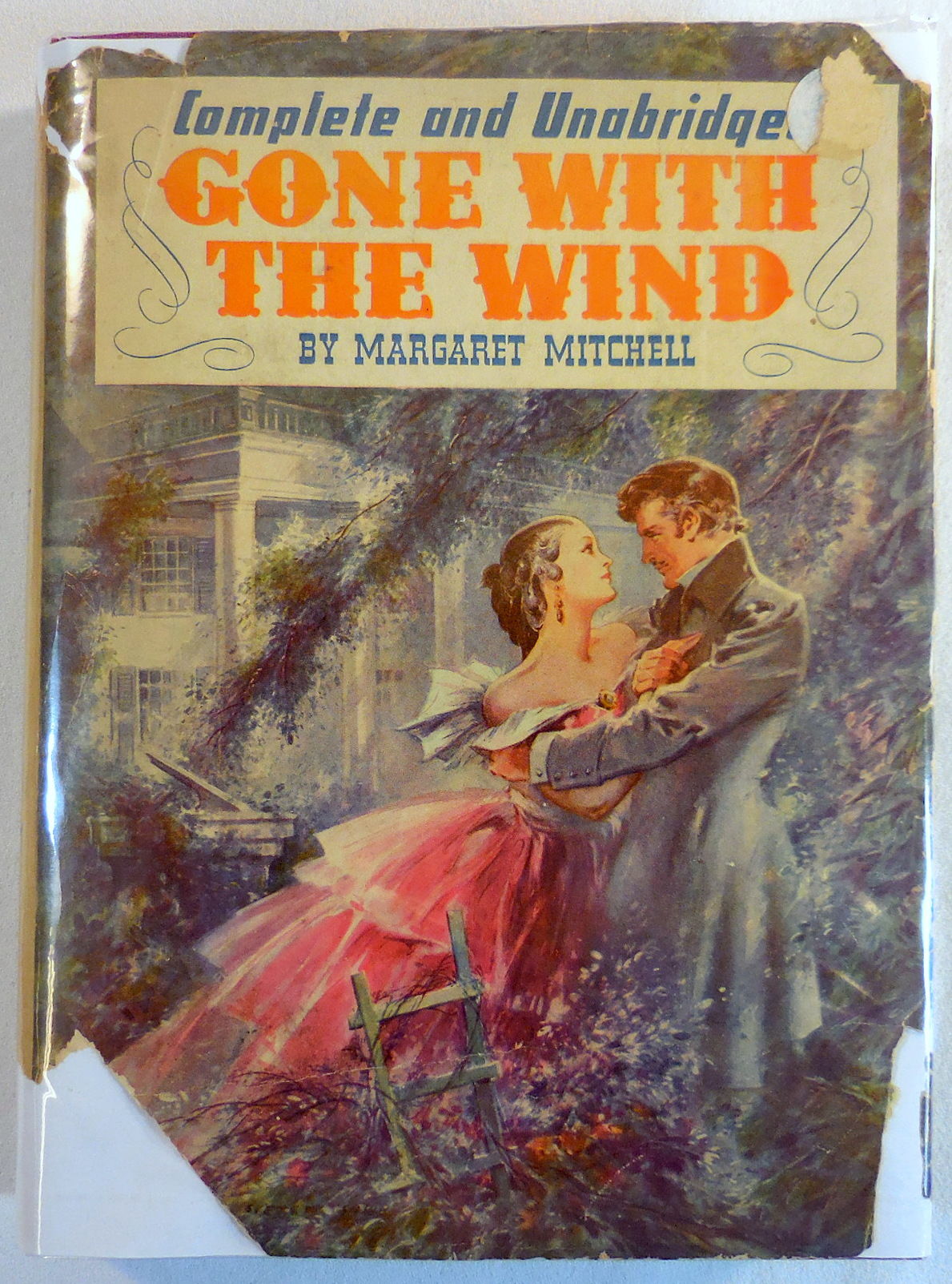Gone with the Wind: A Comprehensive Look at Margaret Mitchell's Epic Novel

Margaret Mitchell’s Gone with the Wind, published in 1936, remains a landmark achievement in American literature, captivating readers for generations with its sweeping narrative, memorable characters, and vivid portrayal of the American Civil War and Reconstruction era. However, its enduring popularity is interwoven with significant controversy, stemming largely from its portrayal of race and slavery. This comprehensive analysis explores Gone with the Wind from various perspectives, encompassing its literary merit, historical context, cultural impact, and the ongoing debate surrounding its problematic elements. We will examine the novel through the lenses of genre, authorship, reading experience, archival preservation, and its lasting legacy on society.

The Novel’s Literary Landscape: Genre and Structure
Gone with the Wind defies easy categorization. While often labeled as historical fiction or a historical romance, it transcends these simple designations. Its immense scope and complexity blend elements of multiple genres. The novel functions as a Bildungsroman, tracing Scarlett O’Hara’s transformation from a spoiled adolescent to a hardened survivor. This coming-of-age narrative intertwines with a compelling historical account, a complex love triangle, and explorations of social and economic upheaval.

The novel’s structure is largely chronological, following Scarlett’s life from 1861 to 1873. This linear narrative allows Mitchell to fully develop her characters and meticulously depict the significant historical events that shape their lives. The novel’s length, exceeding 1,000 pages, contributes to its immersive quality, allowing for deep character development and detailed historical context, although some critics find the length excessive. The narrative is frequently interrupted by passages of historical exposition, described as similar to the non-fiction interludes in Tolstoy’s War and Peace, a choice that has drawn both praise and criticism.
Plot Summary and Key Events

The novel opens on the eve of the Civil War at Tara, the O’Hara plantation in Georgia. Scarlett’s unrequited love for Ashley Wilkes, his impending marriage to Melanie Hamilton, and her initial encounter with the enigmatic Rhett Butler set the stage for the ensuing drama. The war drastically alters Scarlett’s life, forcing her to confront hardship and loss. Widowed, she navigates the complexities of Atlanta society, her pursuit of Ashley intertwined with her tumultuous relationship with Rhett.
The second half of the novel focuses on the challenging post-war Reconstruction period. Scarlett’s struggle for survival, her ruthless business acumen, and her complicated marriages form the core of this section. The novel culminates in Rhett’s departure and Scarlett’s defiant declaration, “Tomorrow is another day,” leaving the reader to ponder the future of both Scarlett and the changing South.
Margaret Mitchell: Author and Context
Margaret Mitchell’s life and experiences profoundly shaped Gone with the Wind. Born in Atlanta, she grew up immersed in the stories and legacy of the Civil War and Reconstruction, shaping her perspective on this pivotal period in American history. Her personal experiences, including the loss of a loved one and a difficult marriage, likely informed her portrayal of the emotional complexities of her characters.
Her journalistic background at The Atlanta Journal provided her with valuable research skills and a keen eye for detail, allowing her to meticulously craft the realistic settings and historical backdrop of her novel. The novel’s creation itself is notable; Mitchell started writing in 1926 to pass the time while recovering from a car accident, showcasing how personal events can unexpectedly spark creative endeavors.
The Title’s Significance
The title, “Gone with the Wind,” is derived from a line in Ernest Dowson’s poem, “Cynara.” Mitchell chose this evocative phrase because it encapsulated the disappearance of a way of life and the haunting sense of loss that pervaded the South following the Civil War. The title further hints at the fleeting nature of love, beauty, and even the grandest of dreams, adding layers of meaning to the novel’s themes.
Reading and Learning: Engaging with the Narrative
Reading Gone with the Wind is an immersive experience. Mitchell’s descriptive prose brings the antebellum South to life, making the reader feel deeply connected to the characters and their world. However, the novel’s strong emotional impact also stems from its unflinching portrayal of loss, suffering, and the devastating consequences of war and societal upheaval.
Educational Value and Life Lessons
Beyond its entertainment value, Gone with the Wind offers a glimpse into a pivotal period of American history. Although its depictions of slavery are deeply problematic, it also presents valuable insights into the social, economic, and political complexities of the Civil War and Reconstruction. The novel’s exploration of themes like survival, resilience, ambition, love, and loss can provide readers with a rich source of reflection and personal growth. However, it is vital to critically engage with the historical context and potential biases presented in the book, rather than accepting the portrayal of race and slavery at face value.
Libraries and Archives: Preserving the Legacy
Gone with the Wind holds a significant place in literary archives. The original manuscript, although partially destroyed after Mitchell’s death, contains valuable insights into her writing process and revisions. Various editions of the novel, translations, and related materials are held by libraries and archives worldwide, ensuring access for future generations of scholars and readers. The Margaret Mitchell House and Museum in Atlanta serves as a dedicated center for the preservation and interpretation of her life and work.
Cultural Impact and Adaptations
Gone with the Wind’s influence on popular culture is undeniable. Its 1939 film adaptation became a cinematic landmark, solidifying the novel’s place in the American consciousness. However, the film, while commercially successful, has also been subject to criticism for its romanticized portrayal of the antebellum South and its problematic depiction of race. Numerous other adaptations, including stage musicals, have been created, testament to the novel’s enduring power to inspire creative reimaginings.
Awards and Recognition
Gone with the Wind received critical acclaim, including the Pulitzer Prize for Fiction in 1937, and the National Book Award, establishing its status as a literary masterpiece. Its widespread popularity is evident in its global sales exceeding 30 million copies and its consistent ranking among readers’ favorite books. However, it is crucial to acknowledge that this widespread appreciation needs to be contextualized within its racist undertones, a subject often overlooked in many of its accolades.
Censorship and Controversy
The novel has faced censorship and considerable controversy throughout its history. The book’s portrayal of slavery, racism, and the antebellum South has prompted challenges to its inclusion in school curricula and public libraries. These challenges highlight the ongoing debate surrounding the novel’s historical accuracy, ethical implications, and its appropriateness for diverse audiences. It’s crucial to recognize that the debates surrounding the book are not about suppressing free speech, but critically analyzing the content and its inherent biases to fully understand its legacy.
The “Windies” and Fan Communities
Despite its controversial aspects, Gone with the Wind maintains a dedicated fanbase. The “Windies,” a group of ardent fans, celebrate the novel and its film adaptation through various events and activities. Their enthusiasm highlights the novel’s enduring power to resonate with readers, fostering a sense of community and shared appreciation for a complex and controversial literary work. However, it’s also crucial that these communities engage with the problematic aspects of the novel rather than simply ignoring them.
The Legacy of Gone with the Wind: A Critical Analysis
Gone with the Wind’s enduring legacy is multifaceted. Its depiction of the American Civil War and Reconstruction era has, for better or worse, shaped public perception of this period in American history, contributing to the persistence of certain myths and stereotypes. While the novel’s romantic elements and captivating characters continue to resonate, its problematic portrayal of slavery and race necessitates a critical examination of its historical accuracy and ethical implications.
The Lost Cause Myth and Its Perpetuation
Gone with the Wind has been criticized for perpetuating the “Lost Cause” mythology, which romanticizes the antebellum South and minimizes the brutality of slavery. The novel’s depiction of enslaved people, particularly the stereotypical “happy slave,” has fueled accusations of promoting racist ideologies. While Mitchell’s work reflects the views prevalent in her time, it’s crucial that contemporary readers engage with the text critically, acknowledging and confronting its problematic representation of race and history. This approach enables a more informed understanding of the novel’s impact and its place within the broader context of American history and social dynamics. Ignoring these problematic elements prevents a complete and accurate understanding of its impact.
Race, Ethnicity, and Social Issues in the Novel
Gone with the Wind sparked and continues to fuel significant debates concerning its representation of African Americans and its underlying racial biases. The use of racial slurs, the depiction of enslaved people as docile and content, and the novel’s overall perspective of the antebellum South have led to widespread criticism. These critiques highlight the importance of engaging with literary texts through a critical lens, examining both their artistic merit and their historical and social context.
The novel’s depiction of Irish-Americans, particularly Scarlett O’Hara, presents a complex layer of racial and ethnic issues. While Scarlett’s Irish background is used to showcase her defiance and resilience, the depiction also reflects some prevalent negative stereotypes of the Irish. This highlights the layered nature of the racial and ethnic hierarchy presented in the novel, a critical element for its analysis.
The Novel’s Continued Relevance
Despite its problematic aspects, Gone with the Wind remains relevant today. It serves as a powerful reminder of the enduring effects of slavery, the complexities of racial relations in American history, and the challenges of confronting the past. By engaging with the novel critically, acknowledging both its strengths and weaknesses, we can use it as a tool for understanding the past while also promoting a more accurate and inclusive representation of history in our current culture.
Comparing the Novel and the Film Adaptation
While the 1939 film adaptation of Gone with the Wind is iconic, there are notable differences between the novel and the film. The film omits certain details, characters, and storylines which further shaped its reception. By comparing the two, readers and viewers can gain a deeper appreciation for the complexities of the novel and its diverse interpretations. These differences allow for varied reactions and emphasize that the novel is capable of inspiring multiple interpretations across various media forms.
Conclusion: A Lasting, Complex Legacy
Gone with the Wind remains a powerful and enduring work of literature, but its legacy is undeniably complex and controversial. While its literary merit and historical context are undeniable, its problematic portrayal of race and slavery demand critical analysis and careful consideration. By engaging with this work thoughtfully, acknowledging both its strengths and flaws, we can learn from its historical context and appreciate its literary achievement while simultaneously striving towards a more just and equitable representation of the past. The novel’s continued presence in literary conversations is proof of its enduring impact, forcing crucial dialogue about historical representation and responsible reading.